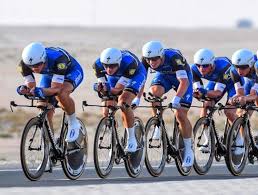Cycling is one of the most grueling sports on earth. Professional cyclists race across mountains, battle crosswinds at 60 km/h, and endure weeks-long events like the Tour de France all while sitting on a thin saddle for hours a day. But what truly sets elite cyclists apart is not just their stamina or strength it’s their ability to compete through pain and injury.
Pain Is Part of the Game
For pro cyclists, injuries are almost inevitable. Crashes, overuse injuries, saddle sores, and chronic conditions like tendonitis are part of the sport’s landscape. Unlike many athletes who sit out until fully healed, cyclists often continue racing with broken bones, torn ligaments, or deep tissue bruises. Why? Because in a sport dictated by stage wins and time cuts, missing even one day can mean losing an entire season’s worth of work.
Mental Toughness and Grit
Racing through injury demands extraordinary mental resilience. Cyclists train not just their bodies, but also their minds to cope with extreme discomfort. Many use visualization, breathing techniques, and pain management strategies learned through years of suffering on the bike. For some, it becomes almost meditative a controlled, disciplined response to pain that lets them keep pushing when others might stop.
Recovery on the Go
Staying competitive while injured also requires smart, science-backed recovery. Teams travel with physiotherapists, massage therapists, and doctors who treat injuries in real time, often right after each stage. Ice baths, compression gear, and nutritional protocols are part of a daily routine that helps riders recover between races or stages even if they’re racing hurt.
In some cases, bikes themselves are adjusted to reduce strain saddles tilted slightly, handlebars repositioned, or gear ratios changed to minimize stress on a specific body part.
Team Support and Strategy
Cycling is a team sport at its core. Injured riders are often protected by teammates drafting behind others, conserving energy, and getting support when needed. Strategy shifts too: instead of aiming for wins, the focus may turn to supporting team leaders or simply surviving the race to fight another day.
Legendary Examples of Grit
Some of cycling’s greatest legends are remembered not just for their wins, but for what they overcame. Tyler Hamilton famously finished the 2003 Tour de France with a fractured collarbone. Geraint Thomas dislocated his shoulder mid-race in the 2017 Giro d’Italia and still finished. These stories aren’t exceptions; they’re the rule in pro cycling.
Pain Is a Rival They’ve Learned to Beat
In the world of professional cycling, pain isn’t a stop sign it’s another competitor. What makes these athletes extraordinary is not just how fast they go, but how deep they dig when the road gets rough. Through injury, pain, and fatigue, they keep pedaling because in cycling, the toughest riders often win not despite the pain, but because they’ve learned how to ride through it.

